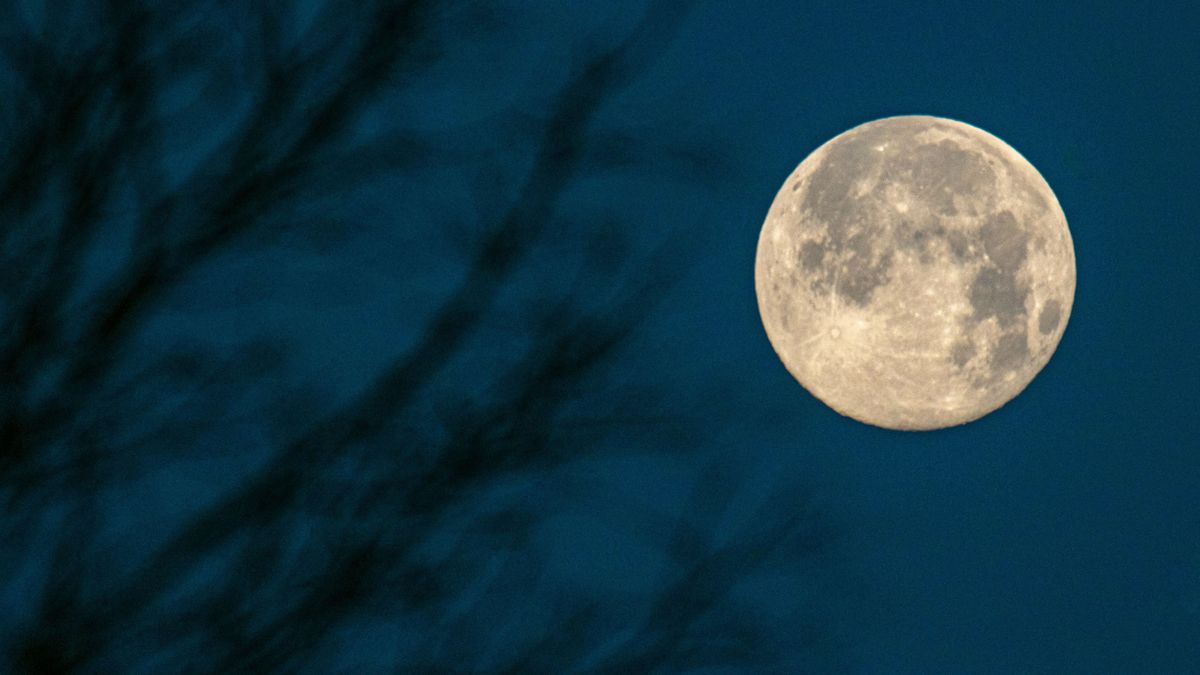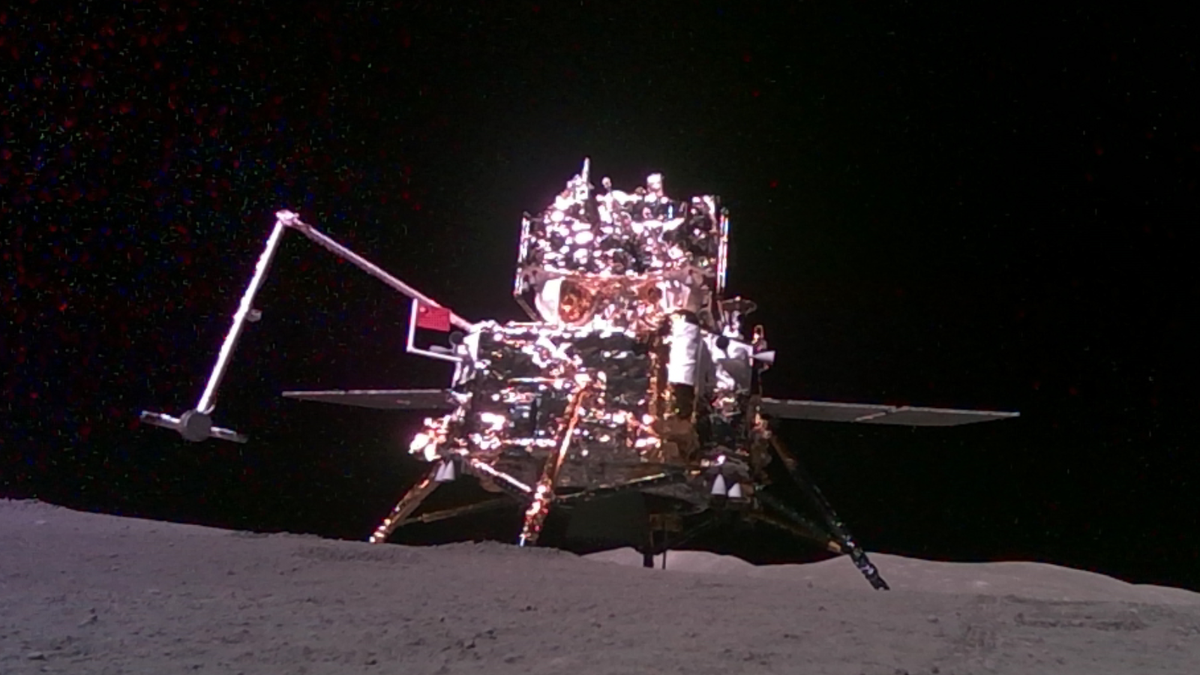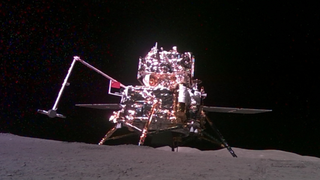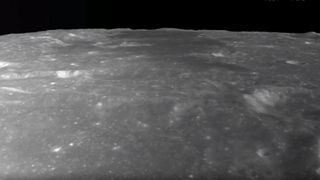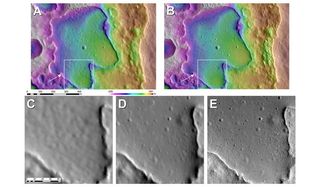In addition to the April 8 total solar eclipse and vibrant displays of auroras, there’s another celestial treat for skywatchers this year: the first “major lunar standstill” since 2006. During this event, the moon rises and sets at its most extreme northerly and southerly positions on the horizon, reaching its highest and lowest points in the 18.6-year lunar cycle. This is possible because the moon doesn’t follow the same path as the sun. Its rising and setting positions on the horizon change constantly due to the movements of Earth and…
Read MoreTag: The moon
How China’s Chang’e 6 minirover snapped its epic photo on the moon’s far side
China has revealed details about a miniature rover tucked away on the country’s pioneering Chang’e 6 lunar far side sample-return mission. Chang’e 6 launched on May 3 on a Long March 5 rocket. While being a repurposed backup to the successful 2020 Chang’e 5 mission, it was revealed after launch that the new spacecraft also packed a surprise rover. The Chang’e 6 lander touched down in Apollo crater with the South Pole-Aitken basin on June 1. The rover was deployed around two days later, after sampling operations on the moon…
Read MoreChang’e 6 mission’s far-side moon samples enter return-to-Earth module in lunar orbit
China’s Chang’e 6 mission continues to make history, having collected the first samples ever retrieved from the far side of the moon and now transferring those samples between spacecraft in orbit. That transfer was necessary for the next step in the samples’ journey — returning to Earth. According to the China National Space Administration (CNSA), the successful rendezvous and docking of the Chang’e 6 ascender and its orbital module took place at 2:48 p.m. Beijing time (2:48 a.m. ET; 0648 GMT) on Thursday (June 6). The safe transfer of the…
Read MoreWatch China’s Chang’e 6 probe land on far side of the moon in dramatic video
China’s lunar sample collection mission Chang’e 6 has made history by successfully touching down on the far side of the moon, and it even sent back a stunning video of its landing. The China National Space Administration (CNSA) probe arrived at the moon on Sunday (June 2_ at 6:23 a.m. Beijing Time, which was 6:23 p.m. on Saturday (June 1) EDT (2223 UTC). The video footage was filmed by the Chang’e-6 lander’s landing camera. It shows the spacecraft’s close approach to the lunar surface as well as its touchdown. The…
Read MoreThe secrets of supernovas might be locked in moon dust
The secrets of the supernova star explosions could be hidden in dust scattered across the moon — and a team of scientists from the China Institute of Atomic Energy (CIAE) has devised a new way of unlocking those stellar death clues. The research could help scientists obtain a clearer picture of how stars die and provide material for the next generation of stars, planets, moons, and sometimes even life — at least, when it comes to Earth. The technique hinges on the improved detection of a rare iron isotope found…
Read MorePeru and Slovakia sign the Artemis Accords for peaceful moon exploration
This week, two more nations signed the Artemis Accords. NASA held a ceremony at its headquarters in Washington, D.C. on Thursday (May 30) to host representatives from both Slovakia and Peru. During the event, both countries signed the agency’s Artemis Accords, a set of principles that aims to lay out a framework for peaceful cooperation in space and on the moon. The addition of these two nations brings the total of signing countries to 42. The Artemis Accords were first launched and signed in October 2020 by eight nations, including…
Read MoreMoon-mapping could level up for NASA’s upcoming Artemis missions. Here’s how
No matter how long humans have looked up and stared at the moon — and despite the number of satellites we’ve sent up to observe it — our maps of its terrain still hit a resolution limit. Yet, scientists want to continually push that limit — and it appears they’ve made some headway. Related: Safety comes 1st for Artemis moon missions despite ‘space race’ with China, NASA chief says A new study has enlisted the help of algorithms to automate parts of a method used to reconstruct terrain data from…
Read MoreSee May’s Full Flower Moon blossom in the night sky tonight
The full moon of May 2024 rides the Scorpion’s back across the night sky tonight. The Full Flower Moon will be in the Scorpius constellation tonight (May 23), rising in the southeast just after sunset. Because full moons occur when the sun and the moon are completely opposite one another in the sky, the moon will rise at sunset and set with the sunrise the following morning. Because of its location in the sky tonight, the Full Flower Moon makes for an excellent guide to help you learn the stars…
Read MoreAstronauts on the moon could stay fit by running in a Wheel of Death
Any human who spends enough time in a low-gravity environment — such as a future habitat on the moon — will experience bodily changes as their muscles atrophy, their bones lose mass and their control over their whole body itself declines. This is why astronauts who spend time beyond Earth’s atmosphere must exercise on their missions. Without physical fitness, they’ll struggle to function on even a basic level when they return to Earth’s gravity. Now, researchers from the University of Milan have devised a new form of exercise to keep…
Read MoreNASA’s Viper moon rover gets its ‘neck’ and ‘head’ installed for mission later this year
NASA”s Volatiles Investigating Polar Exploration Rover (VIPER) has earned its “neck” and “head,” aka its “mast,” meaning it now stands proudly at 8 feet (2.4 meters) tall. The photo below, taken in a clean room at NASA’s Johnson Space Center earlier this month, shows progress on quite the impressive robot. It is expected to take a trip to the South Pole of the moon later this year, embarking on a 100-day mission. The mission will involve learning more about water on the moon and gleaning what other resources may be…
Read More